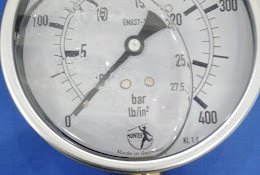When we think of ships at sea, two of the most iconic types that come to mind are cruise ships and cargo ships. While both travel the same waters, they serve very different purposes. Cruise ships are designed to offer luxury and leisure to passengers, while cargo ships focus on transporting goods across oceans. In this article, we’ll explore the significant differences between cruise ships and cargo ships, covering aspects like design, purpose, and onboard experience. By the end, you’ll have a clear understanding of what sets these two types of vessels apart.
Purpose and Design: The Primary Difference
The primary distinction between cruise ships and cargo ships lies in their design and purpose. Cruise ships are built to provide passengers with a luxurious and comfortable experience while traveling. These ships are equipped with various amenities such as swimming pools, spas, entertainment venues, and restaurants. Their main goal is to ensure passengers have an enjoyable voyage, whether it’s a week-long cruise or a longer journey. Cruise ships are designed for pleasure and relaxation, offering a floating resort experience.
Cargo ships, on the other hand, are designed solely for the transportation of goods. They are often much larger than cruise ships, with huge cargo holds designed to carry everything from raw materials to finished products. These ships are built with efficiency in mind rather than comfort, and their primary purpose is to get goods from one port to another. Unlike cruise ships, cargo ships do not offer any amenities for passengers, as they are not designed for leisure travel.
Onboard Experience: The Passenger Factor
The onboard experience is one of the most noticeable differences between these two types of ships. Cruise ships are designed to provide passengers with a variety of experiences during their journey. Passengers can enjoy themed restaurants, high-end dining, entertainment shows, spas, and even water parks while traveling. The interior of a cruise ship resembles a luxury hotel, complete with comfortable cabins, fine dining rooms, and lounges. There’s a focus on relaxation and fun, making the experience feel like a vacation in itself.
Cargo ships, in contrast, are focused solely on transporting goods. Passengers, if any, are extremely rare, and the living quarters are not designed for comfort or luxury. The few crew members on board typically work in shifts to ensure the smooth operation of the ship, with little time for relaxation or entertainment. The onboard experience is purely functional, and passengers—if they exist—would not expect any of the amenities found on a cruise ship. The purpose of the journey is purely logistical.
Speed and Travel Times: Efficiency vs. Leisure
Another important distinction is the speed and travel times of cruise ships and cargo ships. Cruise ships are designed to operate at speeds that allow them to reach their destination in a timely manner while ensuring that passengers enjoy the scenic views along the way. These ships usually travel at speeds of around 20-25 knots, allowing them to complete their itineraries within a reasonable time frame.
Cargo ships, on the other hand, prioritize efficiency over speed. These ships typically move at slower speeds, around 12-20 knots, as they are designed to transport large quantities of goods over long distances. The slower speed is ideal for conserving fuel and maintaining the safety of the cargo. As a result, cargo ships may take longer to reach their destinations, but they are built to handle heavy loads and navigate rough seas with stability.
Safety Features and Regulations
Both cruise ships and cargo ships are subject to strict safety regulations to ensure the well-being of passengers and crew members. Cruise ships are equipped with advanced safety features, including lifeboats, fire suppression systems, and sophisticated navigation equipment. These ships must meet the safety standards set by international maritime organizations, and regular drills are conducted to ensure passengers and crew know what to do in case of an emergency.
Cargo ships are also subject to safety regulations, but their focus is more on protecting the cargo than the comfort of any passengers. These ships are designed to prevent accidents and maintain stability while carrying heavy loads, and they are equipped with the necessary safety features to keep the crew safe. While safety is always a priority, the regulations and safety protocols on cargo ships may differ from those on cruise ships, as the primary concern is the successful delivery of goods rather than the comfort and safety of passengers.
Size and Capacity: Comparing the Giants
When it comes to size, cargo ships are often much larger than cruise ships. Cargo ships are built to carry enormous amounts of goods, which requires a vast amount of space. Some cargo ships can be over 1,000 feet long, with the capacity to carry tens of thousands of tons of cargo. The size of a cargo ship is directly related to its ability to transport goods efficiently, as the larger the ship, the more cargo it can carry.
Cruise ships, though still large, are typically not as long or as heavy as cargo ships. They are built to accommodate a large number of passengers and provide them with plenty of amenities, but they don’t need to be as massive as cargo ships. The focus is on ensuring the comfort and convenience of passengers, not the transportation of goods. Therefore, cruise ships are generally more spacious in terms of guest areas and amenities, but cargo ships have a much higher total capacity for freight.
Renting a Yacht for Special Occasions
For those looking for a more private and personalized experience on the water, renting a yacht can provide the perfect solution. Whether you’re planning a special celebration or a luxurious getaway, yachts are ideal for those who want a unique experience at sea. If you’re looking to rent a yacht, you can explore options like those offered by Rent a Yacht. A private yacht rental allows for a customizable experience, including gourmet meals and breathtaking views.
For an even more exclusive experience, consider a VIP yacht dinner, which offers the ultimate in luxury and fine dining while sailing. This unforgettable experience includes world-class service and incredible views. You can find more details about VIP yacht dinners on websites like VIP yacht dinner, where you can book a dinner cruise and enjoy the best that the sea has to offer.
Environmental Impact: Cruise Ships vs. Cargo Ships
Both cruise ships and cargo ships have a significant environmental impact, but the nature of that impact differs. Cruise ships, with their large passenger capacities and luxurious amenities, consume a lot of fuel and emit greenhouse gases during their voyages. The environmental footprint of a cruise ship can be large, especially when considering the fuel used for the onboard services and the transportation of guests. Many cruise lines are working to reduce their environmental impact by implementing cleaner technologies and more efficient systems.
Cargo ships also have an environmental impact, primarily due to their size and fuel consumption. Since cargo ships are designed to carry vast amounts of goods, they often require larger engines and more fuel to operate. However, the impact of cargo shipping is somewhat mitigated by the efficiency of transporting large quantities of goods at once, which can reduce the carbon footprint compared to multiple smaller shipments via land or air transport.









